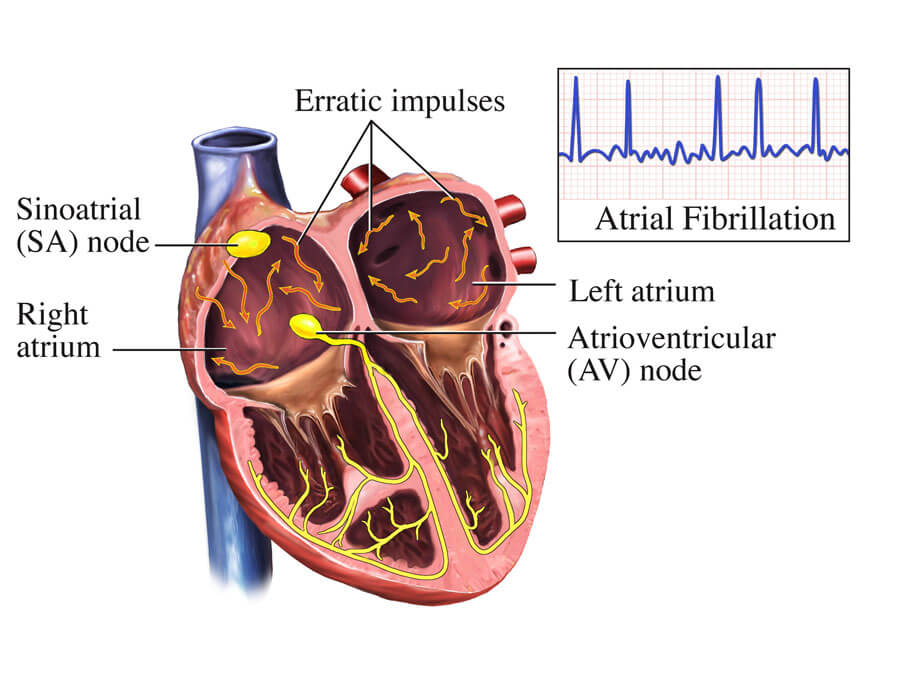A nurse is contributing to the plan of care for a client who is admitted with deep vein thrombosis (DVT) of the left leg. Which of the following interventions should the nurse include in the plan?
Apply ice to the extremity.
Administer vasodilating medications.
Restrict oral fluids.
Monitor platelet levels.
The Correct Answer is D
Choice A reason : Applying ice to the extremity is not a standard intervention for DVT. Ice is typically used to reduce inflammation and pain, but in the case of DVT, the priority is to prevent the clot from growing and embolizing. The use of warmth, not cold, may be recommended to help reduce discomfort and swelling.
Choice B reason : Administering vasodilating medications is not a typical intervention for DVT. Vasodilators are used to widen blood vessels and improve blood flow, but they do not address the risk of clot formation or embolization associated with DVT. The mainstay of medical treatment for DVT is anticoagulant therapy, which helps to prevent further clotting.
Choice C reason : Restricting oral fluids is not an intervention for DVT. Adequate hydration is important in the management of DVT as it can help to prevent blood from thickening and reduce the risk of further clot formation. There is no indication to restrict fluids unless there is another underlying condition that requires it.
Choice D reason : Monitoring platelet levels is an important intervention in the care of a client with DVT, especially if they are receiving anticoagulant therapy. Anticoagulants can affect platelet function and count, and monitoring is necessary to ensure safe levels and prevent complications such as bleeding or thrombocytopenia.
Nursing Test Bank
Naxlex Comprehensive Predictor Exams
Related Questions
Correct Answer is A
Explanation
Choice A reason : Hepatomegaly, or the enlargement of the liver, is a common finding in right-sided heart failure. This condition occurs because the heart does not pump blood effectively, leading to congestion and increased pressure in the venous system, including the hepatic veins. As a result, the liver becomes engorged with blood, causing it to enlarge. The normal liver span in adults is about 10-12 cm in the midclavicular line, and any measurement above this can indicate hepatomegaly.
Choice B reason : Orthopnea, which is shortness of breath while lying flat, is more commonly associated with left-sided heart failure. In right-sided heart failure, symptoms are more related to systemic congestion, such as swelling in the legs and abdomen, rather than pulmonary symptoms like orthopnea.
Choice C reason : Dyspnea, or difficulty breathing, can be a symptom of both left and right-sided heart failure. However, in the context of right-sided heart failure, dyspnea is usually due to the accumulation of fluid in the abdominal cavity (ascites) and the increased pressure in the abdominal veins, which can compress the diaphragm and make breathing difficult.
Choice D reason : Frothy sputum is typically not a symptom of right-sided heart failure. It is more indicative of pulmonary edema, which is associated with left-sided heart failure. In right-sided heart failure, the primary issues are related to the systemic circulation and venous congestion.
Correct Answer is C
Explanation
Choice A reason : The statement that warfarin dissolves clots in the bloodstream is incorrect. Warfarin does not dissolve existing clots. Instead, it is an anticoagulant that works by decreasing the production of certain clotting factors in the blood, which helps prevent the formation of new clots.
Choice B reason : This statement is not accurate regarding the action of warfarin. Warfarin does not affect the electrical impulses of the heart. Medications that slow the response of the ventricles to fast atrial impulses are typically antiarrhythmic drugs, not anticoagulants like warfarin.
Choice C reason : This is the correct statement. Warfarin is prescribed for clients with atrial fibrillation to reduce the risk of stroke. Atrial fibrillation increases the risk of forming blood clots in the heart, which can then travel to the brain, causing a stroke. Warfarin's anticoagulant effect helps to prevent these clots from forming.
Choice D reason : Warfarin does not help maintain a normal heart rhythm. It is not an antiarrhythmic drug but an anticoagulant. The purpose of warfarin in atrial fibrillation is to prevent stroke by reducing the risk of clot formation, not to correct the heart rhythm.

Whether you are a student looking to ace your exams or a practicing nurse seeking to enhance your expertise , our nursing education contents will empower you with the confidence and competence to make a difference in the lives of patients and become a respected leader in the healthcare field.
Visit Naxlex, invest in your future and unlock endless possibilities with our unparalleled nursing education contents today
Report Wrong Answer on the Current Question
Do you disagree with the answer? If yes, what is your expected answer? Explain.
Kindly be descriptive with the issue you are facing.
